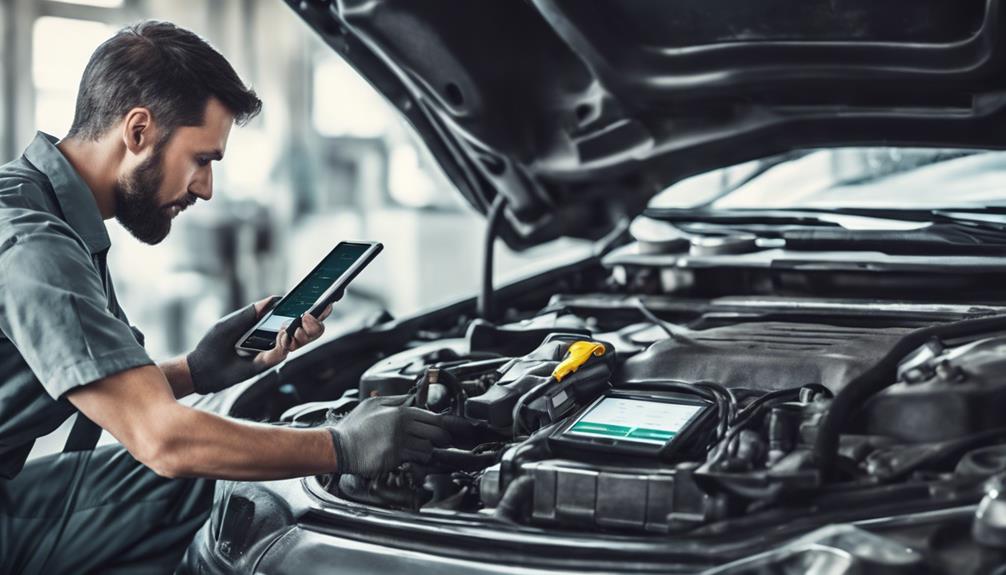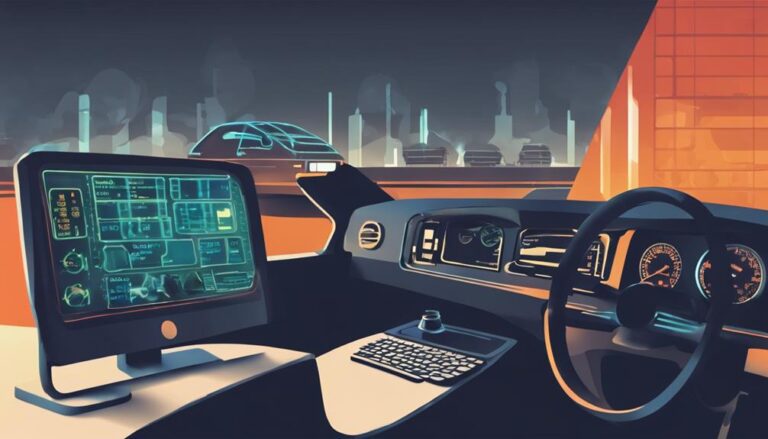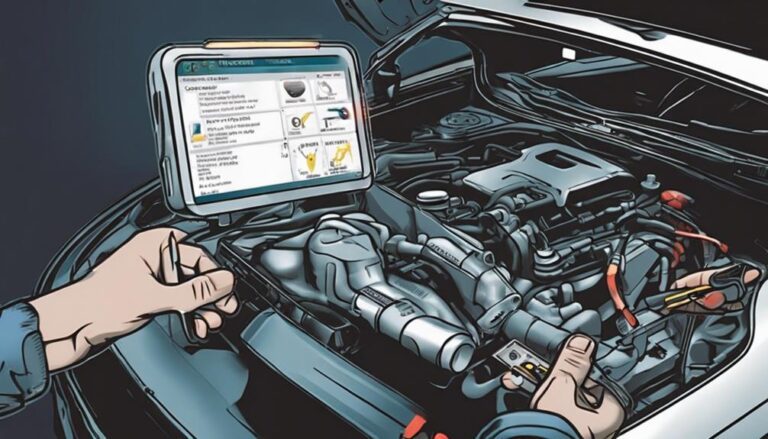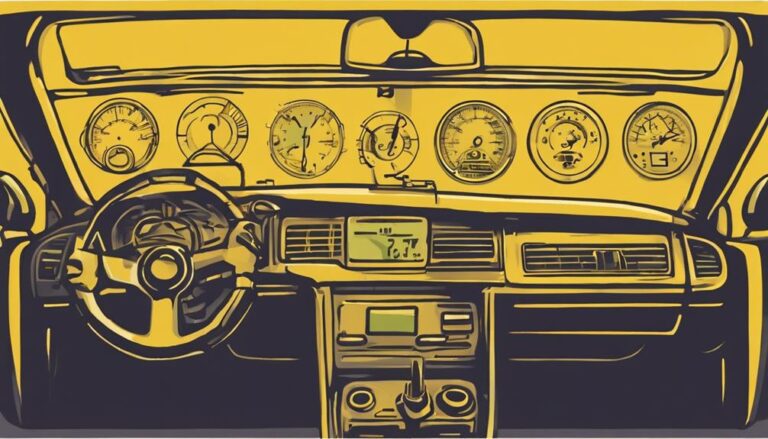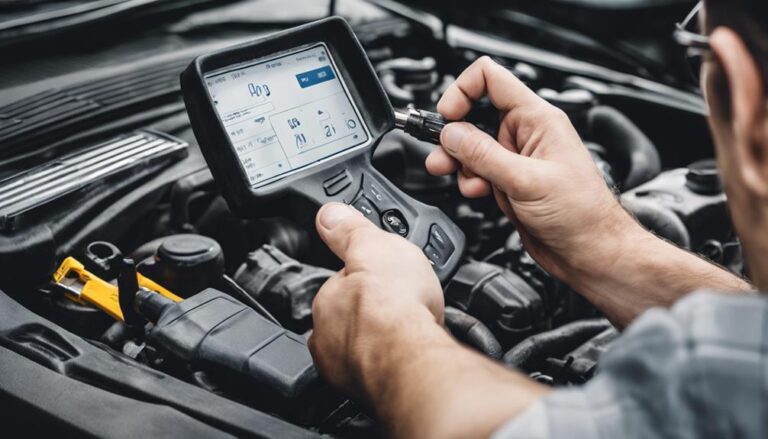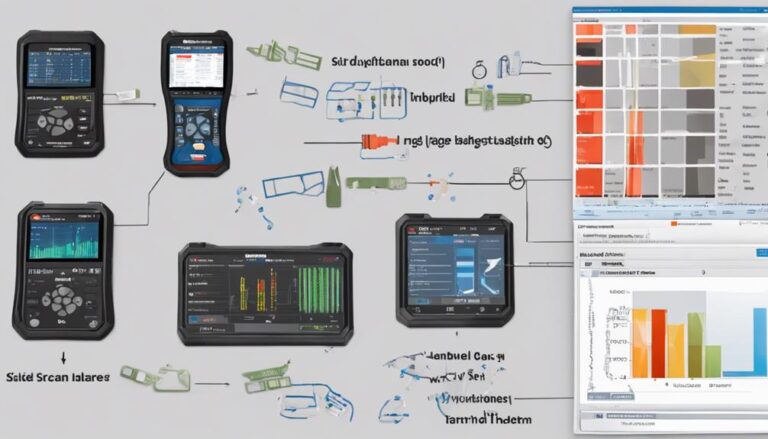Expert Guide: Check Engine Light Diagnosis and Repair
Imagine driving down a dimly lit road, the only illumination being the ominous glow of the check engine light on your dashboard. You're left wondering what could be wrong with your vehicle, and how can you address it effectively to ensure a smooth journey ahead.
Understanding the intricacies of this warning indicator and mastering the art of diagnosis and repair can save you time, money, and potential headaches down the road.
So, are you prepared to unravel the mysteries behind your check engine light and take control of your vehicle's fate?
Key Takeaways
- Promptly addressing check engine light issues prevents costly repairs and engine damage.
- Professional diagnostic tools like the THINKCAR ThinkOBD 500 offer comprehensive analysis.
- Understanding and addressing specific DTCs like P0171 or P0440 is crucial.
- Effective repair strategies involve thorough inspections, component testing, and following diagnostic procedures.
Importance of Check Engine Light Diagnosis
Understanding the importance of check engine light diagnosis is crucial for maintaining the health and performance of your vehicle. Ignoring the check engine light can have severe consequences, potentially leading to serious engine damage and costly repairs. By promptly addressing issues indicated by the check engine light, you can prevent further damage and avoid more significant expenses down the road.
The benefits of check engine light diagnosis are numerous. When the light illuminates, it signifies that the Engine Control Module (ECM) has detected a problem within the vehicle's systems. By retrieving Diagnostic Trouble Codes (DTCs) stored by the ECM, technicians gain valuable insights into the root cause of the issues. This data enables them to pinpoint the exact problem efficiently, saving both time and money in the repair process.
Proper diagnosis is essential due to the complexity of modern vehicle systems. Consulting a technician for accurate diagnosis and repair ensures that check engine light concerns are addressed effectively, maintaining the optimal performance of your vehicle.
Common Causes of Check Engine Light
To address the check engine light in your vehicle effectively, it's crucial to identify the common causes triggering this warning indicator. Bad sensors, like oxygen sensors or mass airflow sensors, often lead to the check engine light coming on. Sensor malfunctions can be diagnosed through troubleshooting methods to pinpoint the exact issue.
Additionally, fuel system problems such as a loose gas cap or faulty fuel injectors can trigger the check engine light. Fuel system diagnostics are essential to finding solutions for these issues promptly.
Evaporative emission (EVAP) system problems, including a faulty purge valve or gas cap, are also frequent culprits for the illumination of the check engine light.
Problems with the catalytic converter, such as a failing converter or oxygen sensor, can also be the reason behind the light coming on.
Similarly, issues with the secondary air injection system, like a malfunctioning air pump or diverter valve, can activate the check engine light, necessitating thorough troubleshooting.
Professional Diagnostic Tools and Methods
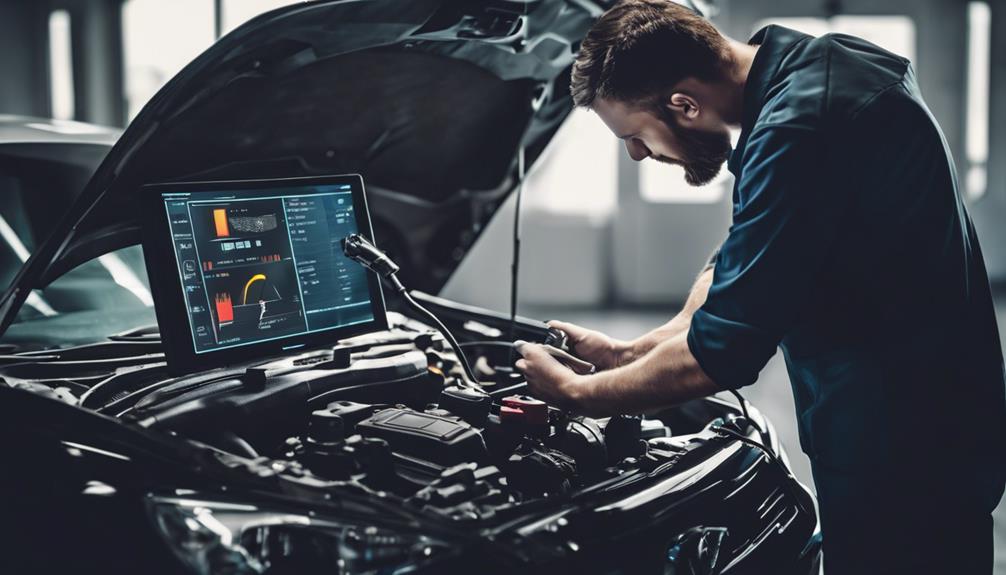
Utilizing advanced diagnostic tools and methods is essential for effectively troubleshooting and resolving check engine light issues in vehicles. Professional diagnostic tools like the THINKCAR ThinkOBD 500 provide full OBD2 functionality, enabling comprehensive vehicle system analysis and maintenance. The THINKCAR ThinkOBD 500 features a large color display and a built-in DTC Library with over 100,000 trouble code definitions for precise diagnosis. This tool includes a help shortcut key for instant access to explanations, aiding in understanding detected issues. Lifetime free updates for software and DTC Library ensure the THINKCAR ThinkOBD 500 remains current with the latest diagnostic information. With multilingual support, an intuitive user interface, and real-time data monitoring, this tool is user-friendly and efficient for both beginners and experienced users.
| Features | THINKCAR ThinkOBD 500 |
|---|---|
| Functionality | Full OBD2 functionality for comprehensive system analysis |
| Display | Large color display |
| DTC Library | Over 100,000 trouble code definitions for accurate diagnosis |
| Updates | Lifetime free software and DTC Library updates |
| User-Friendly | Intuitive interface, real-time data monitoring |
Addressing Check Engine Light Codes
If you explored the diagnostic tools and methods for check engine light issues, now it's time to address specific Check Engine Light codes to accurately identify and resolve underlying vehicle system problems.
Troubleshooting techniques are essential when dealing with Check Engine Light codes. When a code such as P0171 or P0300 appears, it indicates a particular issue within the fuel system or engine function. Maintenance tips can help in addressing these codes promptly.
For instance, codes like P0440, P0442, or P0455 are commonly related to EVAP system problems that may require simple fixes like tightening the gas cap. Understanding the significance of each code is crucial to prevent further damage and ensure optimal vehicle performance.
Effective Repair Strategies for Diagnosis
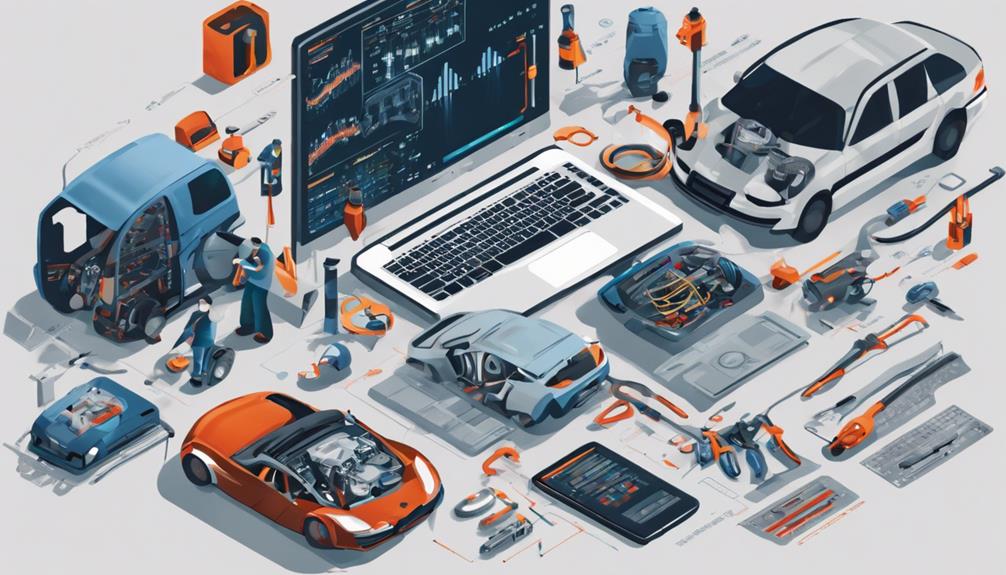
Implement a systematic approach by following diagnostic flowcharts and manufacturer-specific troubleshooting procedures for effective repair strategies. When tackling check engine light issues, it's crucial to employ precise diagnostic procedures and repair techniques to efficiently address the root cause of the problem. Here are some key strategies to consider:
- Utilize Diagnostic Trouble Codes (DTCs): Use these codes to identify specific vehicle system issues accurately.
- Conduct Thorough Visual Inspections: Start with visual checks to spot any obvious problems before diving into complex diagnostics.
- Perform Component Testing: Test sensors, actuators, and other components to pinpoint potential failures accurately.
- Utilize Specialized Diagnostic Tools: Employ tools like multimeters and oscilloscopes for detailed electronic system analysis.
Frequently Asked Questions
What Is the Best Way to Diagnose a Check Engine Light?
To diagnose a check engine light, use an OBD-II scanner to retrieve codes. Professional tools ensure accurate results, while DIY scanners provide basic insight. Opt for precision over simplicity based on expertise for effective diagnosis and repair.
How Much Should an Engine Diagnostic Cost?
Hey, you know that engine diagnostic cost question? Well, it can range from $50 to $150 at most shops. Some stores offer free scans. Dealerships might charge $100 to $200. Go for local mechanics for better deals!
What Is the Difference Between a Check Engine Light Scan and a Diagnostic?
When you get a check engine light scan, it just reads the codes. But a diagnostic dives deeper, using various tools to analyze those codes, system data, and perform tests to pinpoint the actual issue accurately.
Does Autozone Diagnose Check Engine Light for Free?
Yes, Autozone provides free check engine light diagnostics. Their professional technicians use OBD-II scanners to diagnose issues, offering code definitions and recommended actions. You can access results for free, helping you identify and address problems effectively.
Conclusion
In conclusion, accurate diagnosis of the check engine light is crucial for maintaining vehicle performance and preventing potential damage. By understanding the common causes, utilizing professional diagnostic tools, and effectively addressing codes, you can ensure timely and cost-effective repairs.
Remember, choosing the right diagnostic option and seeking professional help when needed will lead to successful outcomes and keep your vehicle running smoothly. Don't ignore the check engine light – take action to keep your car in top condition.

